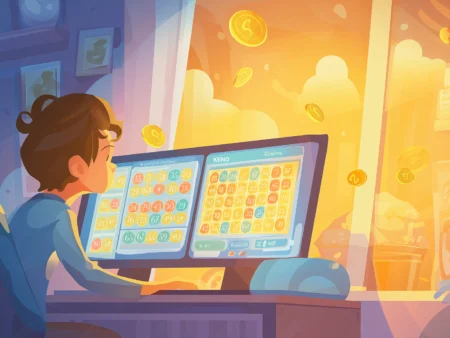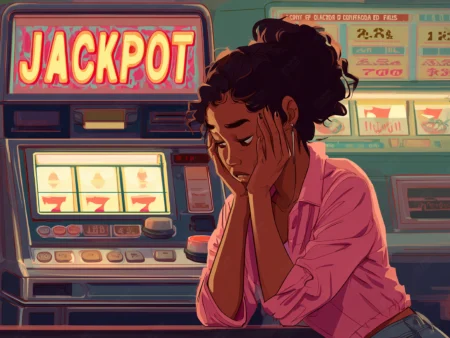Most casino games either move too fast to think, or drag on forever. 3 Card Poker hits the sweet spot. It’s fast, strategic, and surprisingly fair if you know how to play it right. No pot odds. No bluffing. No grinding through endless hands. Just you, three cards, and a shot to beat the dealer, if you make the right call.
Whether you’re spinning a few hands online or pulling up a seat at a live table, this guide cuts through the noise. You’ll get the real rules, payouts, and strategy that actually move the needle, not the filler you’ve seen a dozen times. Let’s get straight to what works.
Table of contents
- What Is 3 Card Poker and Why Do Players Love It?
- 3 Card Poker Rules: How the Game Works
- 3 Card Poker Rules: How the Game Works
- Poker Hand Rankings in 3 Card Poker (Yes, They’re Different)
- 3 Card Poker Strategy: When to Play, When to Fold
- 3 Card Poker Payouts: What You Can Win
- Online vs. Live 3 Card Poker: Which Is Better?
- FAQ: 3 Card Poker Questions Players Actually Ask
- Final Thoughts: Play Smarter, Not Harder
What Is 3 Card Poker and Why Do Players Love It?
If you’re wondering how to play 3 Card Poker, here’s the first thing to know, it’s not Texas Hold’em. You’re not battling a full table of players or sweating your bluff. It’s just you versus the dealer, three cards each, and a couple of smart decisions that matter.
This is one of the most beginner-friendly poker variants around, but don’t mistake simple for shallow. The game still offers enough depth to keep sharp players engaged, especially when it comes to payouts, side bets, and strategy.
Here’s how each hand works:
- Place your Ante bet
- Receive three cards (dealer gets three too)
- Decide: Fold or Play (match your Ante with a second bet)
- Dealer reveals their hand and qualifies with Queen-high or better
No flop. No turn. No river. Just three cards, one opponent, and one make-or-break choice.
Think of it like blackjack meets poker:
- Quick hands (under a minute each)
- Low edge (if you follow the right strategy)
- Real payouts, without the grind of full-ring poker
That’s why it’s a favorite among both casual players and veterans looking for a quick session with real upside.
3 Card Poker Rules: How the Game Works
If you’re new to table games, or poker-style formats in general, 3 Card Poker is one of the cleanest ways to start. The rules are simple. The decisions are quick. And the edge? Manageable, if you play smart.
The Basic Flow of a Hand
Here’s how a standard hand plays out:
- Ante Bet – Place your initial wager. This gets you dealt in.
- Optional Side Bet – You can place a Pair Plus bet, which pays based on your hand strength alone. Some versions also offer side bets like the 6-Card Bonus or Progressive Jackpot (we’ll get into those later).
- Deal – You and the dealer each receive three cards. Yours are face-up. The dealer’s stay hidden.
- Decision Time – Look at your hand. Fold (lose your ante) or place a Play bet equal to your ante to stay in.
- Reveal – The dealer flips their hand and checks if they qualify.
Key rule: The dealer must qualify with Queen-high or better.
If they don’t qualify, your Play bet pushes (returned), and your Ante wins 1:1, even if your hand is weak. If they do qualify, it becomes a true showdown.
The Dealer’s Hand
Let’s break down what “qualifying” means and what happens next:
- Dealer doesn’t qualify (lower than Queen-high):
- Ante pays 1:1
- Play bet pushes
- Pair Plus still pays out if you hit a qualifying hand
- Dealer qualifies (Queen-high or better):
- If your hand wins, both Ante and Play pay 1:1
- If the dealer wins, you lose both bets
- If it’s a tie, both bets push
It’s a clean, fair structure, but it punishes overplaying weak hands. That’s where most beginners go wrong.
Want more table game breakdowns like this?
Check out our Beginner’s Guide to Playing Poker Online.
3 Card Poker Rules: How the Game Works
If you’ve played poker before, forget the flop, the river, and the check-raises. 3 Card Poker rules are cleaner, and that’s what makes it dangerous in the best way.
The Basic Flow
Every hand begins with two options:
- Place an Ante bet (required to play)
- Optional: Place a Pair Plus bet, which pays out based solely on your hand strength, no dealer needed (we’ll break this down later)
Then the cards hit the table. You and the dealer each get three cards, face down. No community cards. No betting rounds. Just one critical choice:
Do you fold and lose your Ante, or match it with a Play bet to take on the dealer?
Here’s the twist:
The dealer only qualifies with Queen-high or better.
- If they don’t qualify: your Play bet pushes (you get it back), and your Ante pays 1:1, assuming you stayed in.
- If they do qualify: it’s a straight showdown. Highest hand wins.
Most players get emotional here, calling with garbage hands or playing every round like it’s a slot spin. But smart players know there’s one hand threshold that flips the odds in your favor. (More on that in the strategy section.)
The Dealer’s Hand Explained
Here’s how payouts work depending on what the dealer flips:
| Scenario | Outcome |
| Dealer doesn’t qualify | You win Ante 1:1, Play bet pushes |
| Dealer qualifies and you win | Both Ante and Play pay 1:1 |
| Dealer qualifies and you lose | You lose both bets |
| Tie | Both bets push |
There’s no bluffing. No side eyes from other players. You’re only playing against the dealer. That keeps things fast, focused, and clear, and it’s a big reason why 3 Card Poker attracts both beginners and sharp bettors.
Poker Hand Rankings in 3 Card Poker (Yes, They’re Different)
You might assume a flush beats a straight, and in most poker games, you’d be right. But 3 Card Poker flips the script. Because the game only uses three cards, the probabilities shift, and so does the hand hierarchy.
That means if you’re playing based on Hold’em instincts, you’re going to misread a few crucial hands, and leave money on the table.
3 Card Poker Hand Rankings (Strongest to Weakest)
| Hand | Description |
| Mini Royal Flush | A-K-Q of the same suit |
| Straight Flush | Three consecutive cards, same suit (6-7-8♠) |
| Three of a Kind | Three cards of the same rank (Q-Q-Q) |
| Straight | Three consecutive cards, mixed suits |
| Flush | Three cards of the same suit |
| Pair | Two cards of the same rank |
| High Card | None of the above, highest card wins |
Yes, in 3 Card Poker, a straight beats a flush.
That’s because flushes are more common with just three cards. The hand rankings are reordered to reflect rarity, not tradition. It keeps the payout structure fair and rewards less frequent outcomes.
Why It Matters
If you’re playing Pair Plus or going after the 6-Card Bonus, these rankings become your roadmap. Misreading a hand, or assuming you’ve nailed a premium combo, can cost you edge and payouts.
One overvalued flush, and you’re burning chips you didn’t need to.
Want to get rock-solid on hand strengths across all formats?
Get clear on hand strength in our Poker Hand Rankings guide.
3 Card Poker Strategy: When to Play, When to Fold
This is where most players either lock in their edge, or give it away.
You’ll hear all kinds of table folklore:
“Never fold a face card.”
“Always bet the Pair Plus.”
“Go with your gut, it’s only three cards.”
That’s not strategy. That’s emotion. And it’s exactly how the house edge creeps up on casual players. Let’s fix that.
Basic Strategy Rule: Stick to Q-6-4 or Better
Here’s the golden rule of 3 Card Poker strategy:
Only place the Play bet if your hand is Queen-6-4 or better.
Everything lower? Fold. No exceptions.
This one rule, based on cold math, not gut instinct, keeps the house edge around 3.37%, which is solid for a table game.
Why Queen-6-4?
It’s the break-even hand where your odds of winning (considering the dealer’s qualifying range) begin to justify the Play bet. Anything weaker, and you’re bleeding EV, even if it “looks close.”
Stick to this rule, and you’re playing optimally. Deviate, and the house thanks you for the donation.
Side Bets Strategy: Pair Plus, 6-Card Bonus & Progressives
This is where the game gets flashy, and volatile. Side bets add excitement, but they’re not where smart money plays.
Pair Plus
- Pays if you hit a pair or better, no dealer matchup needed
- Tempting payouts, especially for hands like straight flush or trips
- But the house edge often sits around 7–8% depending on the paytable
6-Card Bonus
- Combines your hand with the dealer’s to make the best 5-card poker hand
- Bigger wins for full house, four of a kind, or better
- But it’s high variance, and rarely worth chasing if you’re playing with discipline
Progressive Bets
- Usually tied to a mini royal or specific suit-based jackpot
- Fun if you like the sweat, but even lower expected value in the long run
So should you play them?
Only if you’re treating it like entertainment. These are adrenaline bets, high risk, high variance, low return.
If you’re focused on long-term +EV, skip the side action and stay sharp with the Ante/Play core.
Quick Strategy Chart: When to Fold and When to Play
Keep this table in your head (or better yet, bookmark it), it’ll save your bankroll over time.
| Your Hand | Action |
| Q-6-4 or better | Play |
| Q-6-3 or lower | Fold |
| Any Pair or Better | Play |
| Straight / Flush / Trips | Always Play |
Bookmark our 3 Card Poker Strategy & Payout Chart
Perfect for quick reference while playing online or live.
This keeps your decisions fast and stress-free, which is exactly how this game is designed to play.
3 Card Poker Payouts: What You Can Win
Understanding 3 Card Poker payouts is what separates casual players from those who actually know what they’re betting on. This isn’t just about hoping for a big hand, it’s about understanding the odds, payout structures, and where your chips have the best value.
Let’s break down what you can actually win, and how often.
Standard Payouts: Ante & Play Bets
If you’re playing the core game, Ante + Play, the payouts are clean and consistent:
| Bet | Payout |
| Ante Win | 1:1 |
| Play Win | 1:1 |
| Tie | Push |
Bonus: Some casinos offer Ante Bonus payouts for premium hands (even if the dealer doesn’t qualify). Here’s a common structure:
| Hand | Ante Bonus |
| Straight Flush | 5:1 |
| Three of a Kind | 4:1 |
| Straight | 1:1 |
These are paid automatically when your hand hits, no side bet required.
Pair Plus Payouts: Bigger Hands, Bigger Risk
Pair Plus is where the high multipliers come in, but also higher house edge.
In this side bet, you’re not playing against the dealer. It’s just you and your cards. Payouts vary slightly by casino, but this is the most common paytable:
| Hand | Payout |
| Mini Royal (A-K-Q suited) | 50:1 |
| Straight Flush | 40:1 |
| Three of a Kind | 30:1 |
| Straight | 6:1 |
| Flush | 3:1 |
| Pair | 1:1 |
What is a mini royal in 3 Card Poker?
That’s the top hand in Pair Plus, Ace, King, Queen suited. It’s rare (1 in ~500 hands), but when it lands, it pays big.
6-Card Bonus & Progressive Side Bets
This side bet combines your three cards with the dealer’s three to create the best 5-card poker hand. Bigger hand = bigger payout. Some versions also include progressive jackpots for specific hits.
Common 6-Card Bonus payouts:
| Hand | Payout |
| Royal Flush | 1000:1 |
| Straight Flush | 200:1 |
| Four of a Kind | 50:1 |
| Full House | 25:1 |
| Flush | 15:1 |
| Straight | 10:1 |
| Three of a Kind | 5:1 |
Progressive jackpots are usually triggered by a mini royal or specific suited straight flush, and a percentage of each side bet feeds into the growing prize pool.
These bets are pure risk/reward. They’re fun, but they’re not strategy plays. If you’re chasing them, do it for the thrill, not for edge.
Odds Breakdown: How Often Do You Actually Hit?
Here’s how often key hands show up:
| Hand | Odds |
| Pair | 1 in 4.9 |
| Flush | 1 in 19.2 |
| Straight | 1 in 25.6 |
| Three of a Kind | 1 in 47.3 |
| Straight Flush | 1 in 459 |
| Mini Royal Flush | ~1 in 500+ |
What are the payouts for 3 Card Poker?
Most players win 1:1 on main bets. Side bets are where the big multipliers live, but they come with lower odds and higher house edge. Know what you’re chasing before you start firing chips.
Online vs. Live 3 Card Poker: Which Is Better?
There’s no wrong way to play 3 Card Poker, but where you play changes everything.
Whether you’re clicking “Deal” on your phone or flipping real cards with a live dealer, each format has its pros… and a few tradeoffs.
Speed: How Fast Do You Want to Play?
If you like rapid-fire hands and zero downtime, online 3 Card Poker is the clear winner.
- 50–70 hands per hour online = more volume, more reps, faster bonuses
- Ideal for testing strategy, grinding promotions, or getting in the zone
Live dealer tables, on the other hand, are slower, around 20–30 hands per hour, but offer more immersion. Real cards. Real dealers. Real-time tension. Some players love the atmosphere. Others find the pace frustrating.
Betting Limits & Side Bets
Here’s where online play really shines for bankroll management:
- Online tables often start at just €1 per hand
- Side bets like Pair Plus and 6-Card Bonus are usually available
- Payout structures can vary by provider (always check before you play)
Live versions usually have higher minimums, especially for branded tables. Fewer side bet variations, less flexibility, but a more “real casino” feel.
Promotions, Bonuses & Extra Value
This one’s not even close, online 3 Card Poker offers way more upside if you care about value.
- Welcome bonuses, reloads, cashback, and loyalty points
- Many casinos allow table game contributions, just check T&Cs
- Live dealer promos are increasingly available at top-tier sites
Whether you’re bonus hunting, clearing wagering, or building status, online gives you more control and more chances to win extra.
Want to play where your deposit actually gets you more?
Explore online casinos offering 3 Card Poker with welcome bonuses worth chasing.
From crypto-friendly sites to no-KYC casinos with instant payouts, we only feature brands that value your time, and your action.
FAQ: 3 Card Poker Questions Players Actually Ask
Stick to one rule: only make the Play bet if your hand is Queen-6-4 or better. That single decision keeps the house edge around 3.37%. Fold anything weaker, no exceptions. It’s the easiest way to play sharp without overcomplicating things.
It’s a blend, but closer to structured luck. You can’t control the cards, but you can absolutely control your decisions. Fold when you should, skip the side bets if you’re edge-focused, and let math, not emotion, drive your plays.
Yes, often. Any hand lower than Queen-6-4 should be folded every time. Holding onto weak hands “just in case” is exactly how the house eats into your stack. Fold smart, play strong hands, and stay in control.
A mini royal is the best hand in the game, Ace, King, Queen of the same suit. On the Pair Plus side bet, it usually pays 50:1. It’s rare, but when it hits, it hits big.
The 6-Card Bonus combines your three cards with the dealer’s three to create the best five-card poker hand. Think full house, four of a kind, or even a royal flush. Bigger hands pay massive multipliers, but the odds are long, and the variance is high.
Final Thoughts: Play Smarter, Not Harder
You don’t need a 30-line strategy chart or a poker theory deep-dive to beat most players at 3 Card Poker. You just need to know the rules, follow the Q-6-4 strategy, and treat side bets like what they are, entertainment, not edge.
That alone puts you ahead of the pack.
This game rewards clear thinking and quick decisions. Once you know what beats what, and when the dealer qualifies, it stops feeling like a gamble, and starts feeling like a smart play.
Ready to play with confidence?
Check out our list of trusted online casinos offering 3 Card Poker and start playing with an edge.












































